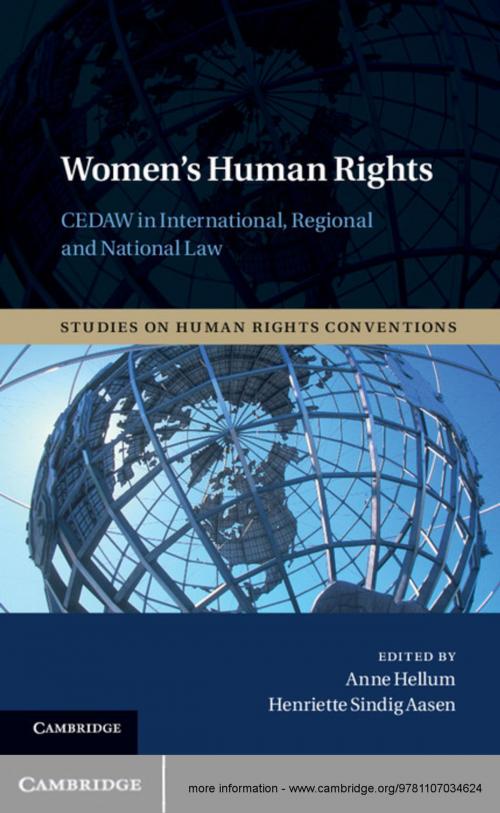Women's Human Rights
CEDAW in International, Regional and National Law
Nonfiction, Reference & Language, Law, International, Social & Cultural Studies, Political Science| Author: | ISBN: | 9781107272613 | |
| Publisher: | Cambridge University Press | Publication: | July 11, 2013 |
| Imprint: | Cambridge University Press | Language: | English |
| Author: | |
| ISBN: | 9781107272613 |
| Publisher: | Cambridge University Press |
| Publication: | July 11, 2013 |
| Imprint: | Cambridge University Press |
| Language: | English |
As an instrument which addresses the circumstances which affect women's lives and enjoyment of rights in a diverse world, the CEDAW is slowly but surely making its mark on the development of international and national law. Using national case studies from South Asia, Southern Africa, Australia, Canada and Northern Europe, Women's Human Rights examines the potential and actual added value of the Convention on the Elimination of All Forms of Discrimination against Women in comparison and interaction with other equality and anti-discrimination mechanisms. The studies demonstrate how state and non-state actors have invoked, adopted or resisted the CEDAW and related instruments in different legal, political, economic and socio-cultural contexts, and how the various international, regional and national regimes have drawn inspiration and learned from each other.
As an instrument which addresses the circumstances which affect women's lives and enjoyment of rights in a diverse world, the CEDAW is slowly but surely making its mark on the development of international and national law. Using national case studies from South Asia, Southern Africa, Australia, Canada and Northern Europe, Women's Human Rights examines the potential and actual added value of the Convention on the Elimination of All Forms of Discrimination against Women in comparison and interaction with other equality and anti-discrimination mechanisms. The studies demonstrate how state and non-state actors have invoked, adopted or resisted the CEDAW and related instruments in different legal, political, economic and socio-cultural contexts, and how the various international, regional and national regimes have drawn inspiration and learned from each other.















